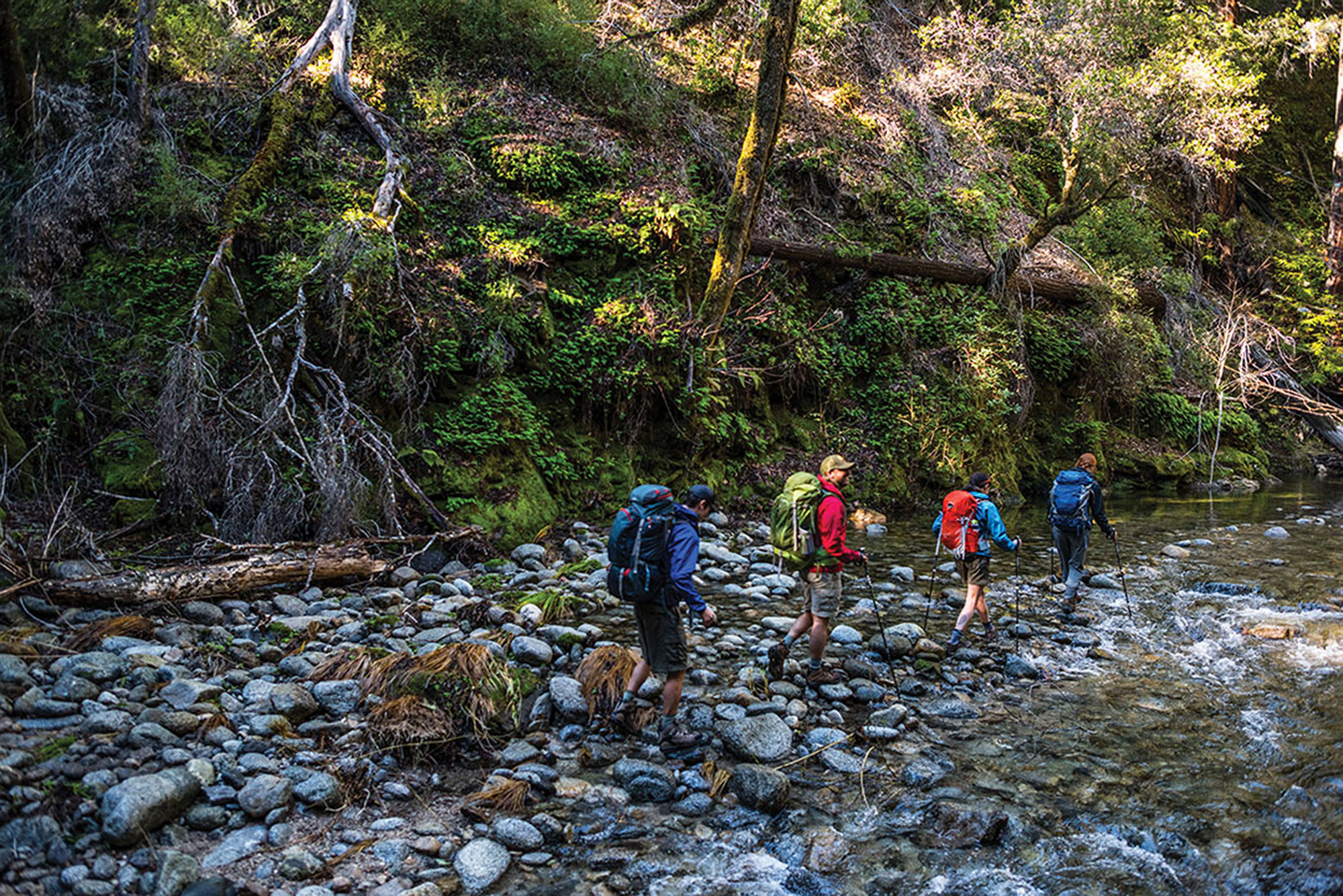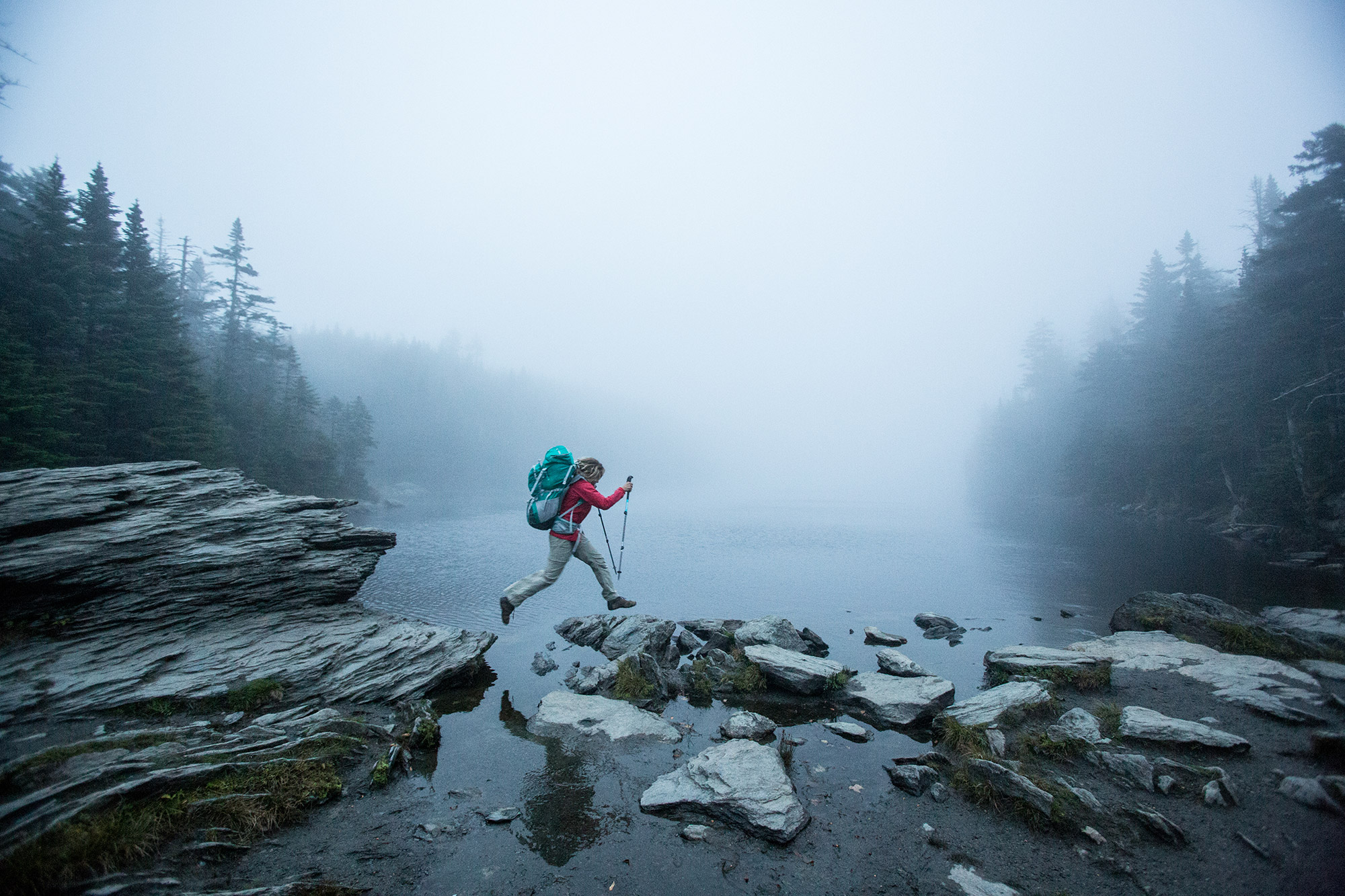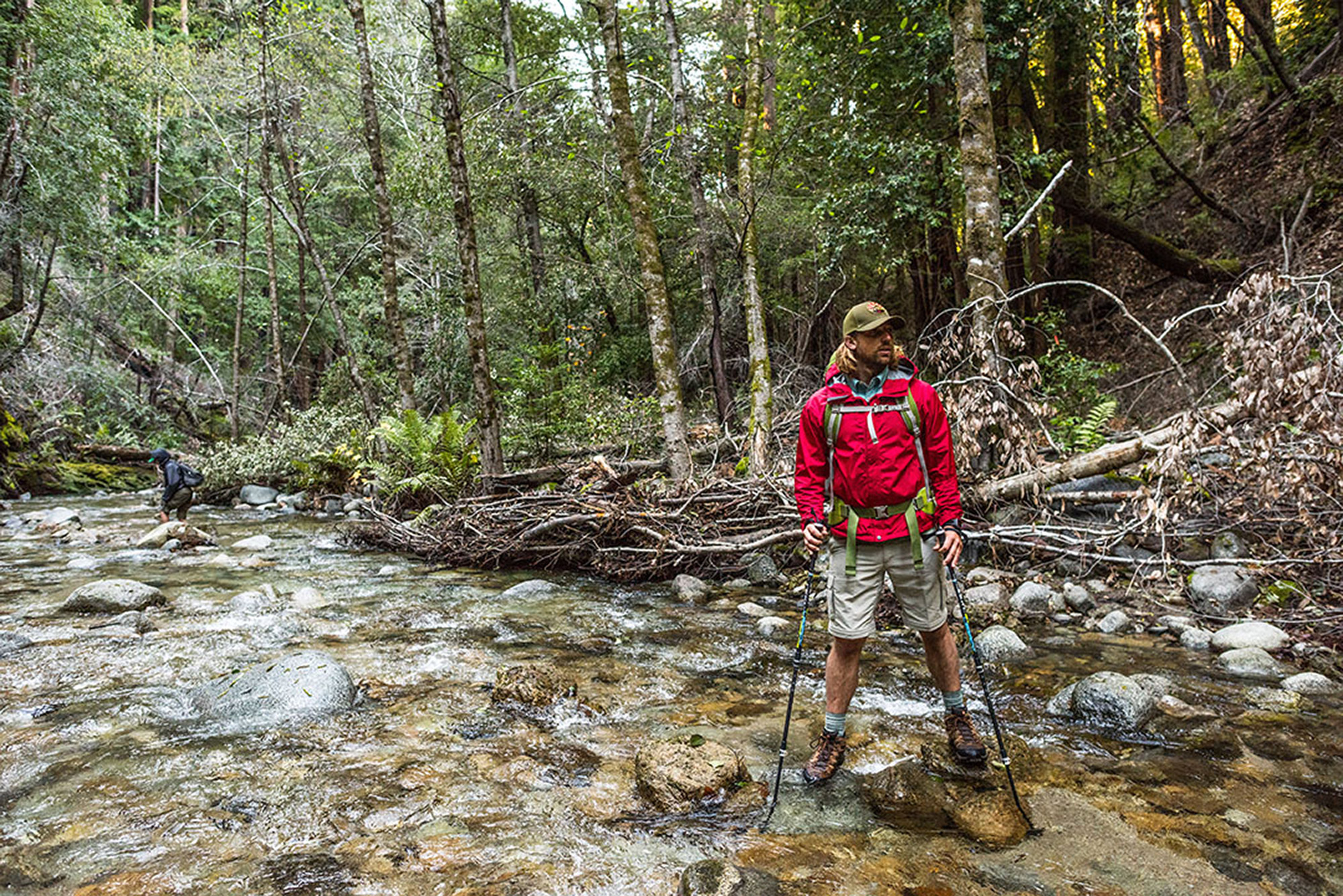Springtime means water. With rain in the forecast and the temperatures inching higher and melting the snowpack, streams and rivers swell to their highest levels of the year, which for hikers and backpackers, can make traveling through the woods more difficult. Stream and river crossings might be an important part of your trip, but with them raging, it might also be the most dangerous part, which makes knowing how to get from one side to the other an important skill to have.
While your hike might depend on a river crossing, though, it’s important to know the limits of your abilities and not take unnecessary risks. Sometimes water levels can be high enough that a safe crossing just isn’t possible. Know your limits and don’t be afraid to turn around. That hike will still be there in the summer when water levels have dropped.
But if a crossing is something that you can achieve, follow these steps to get across safely.

Step 1: Scout for a Spot
When crossing over swiftly moving water, looking for the perfect spot is the most important step to safely cross. Don’t automatically assume that a direct line from blaze to blaze on either side of the river is the path you should follow. The amount of water flowing downstream won’t be consistent on every section of the trail, and the safest crossing point will be different due to weather conditions.
You should stay clear from bends where the water speed picks up, instead look for where the river widens. This means that the water in that area is much shallower, making it a better spot to cross. Take a look downstream and consider what you’re up against if you do fall. If you see any stuck logs, debris, or rocks that you wouldn’t want to come in contact with, find another spot. Check the other side of the stream for a solid exit point to get you back onto dry land as quickly as possible. Keep in mind that when the river bank is steep, the chances of slipping back into the water is high. Look for a lower exit point to cross safely.

Step 2: Unstrap Your Pack
Before crossing over, unclip the hip and sternum straps on your pack. In the event that you lose your footing and fall in, your pack should be easily removable from your body, so that it doesn’t fill up with water and compromise your mobility. If you find yourself in this situation, drop the pack and save yourself first.
Always keep your shoes on when crossing. Good footwear will provide much better footing, traction, and protection rather than crossing barefoot, even if it means your boots will be wet—don’t worry, they will dry.

Step 3: Cross the Stream
You should always face upstream and shuffle sideways slowly. Using trekking poles can make a big difference in helping keep you supported. If you don’t have trekking poles, grab sturdy sticks to help make things easier. Make slow, steady movements in a slightly downstream direction toward the opposite side of land. It’s important that you maintain a point of contact with the bottom as much as you can, so only move one foot once the other one is fully stable.
If you are hiking in a group, use that to your advantage: Crossing in groups can assist with maintaining stability. For groups of three, try forming a triangle, facing each other while holding onto the waist of the person next to you. Put the strongest member of the group on the upstream side and move together slowly. For groups of more than three, stand in a line while facing the current, keeping the strongest person in the lead bracing with trekking poles, while everyone else holds onto the waist or pack of the person in front of them. Simultaneously take small steps together in one set direction and one foot at a time.

Step 4: Swim Out
Swimming should only be attempted in flat, calm water, but if you accidentally slip and become submerged, drop your backpack, point your feet downstream, and get on your back—this will allow you to use your feet to defend against hazards and keep your head protected. Swim quickly to shore.
Andrea Davis
Andrea is a hiker, writer, and adventurer wandering around New England. She spends most of her time in the White Mountains of New Hampshire. She enjoys snowboarding, snowshoeing, hiking at night, and traveling.
Related Posts
April 2, 2024
10 Tips for Mountain Biking Etiquette During Mud Season
One rough spring could ruin the…




